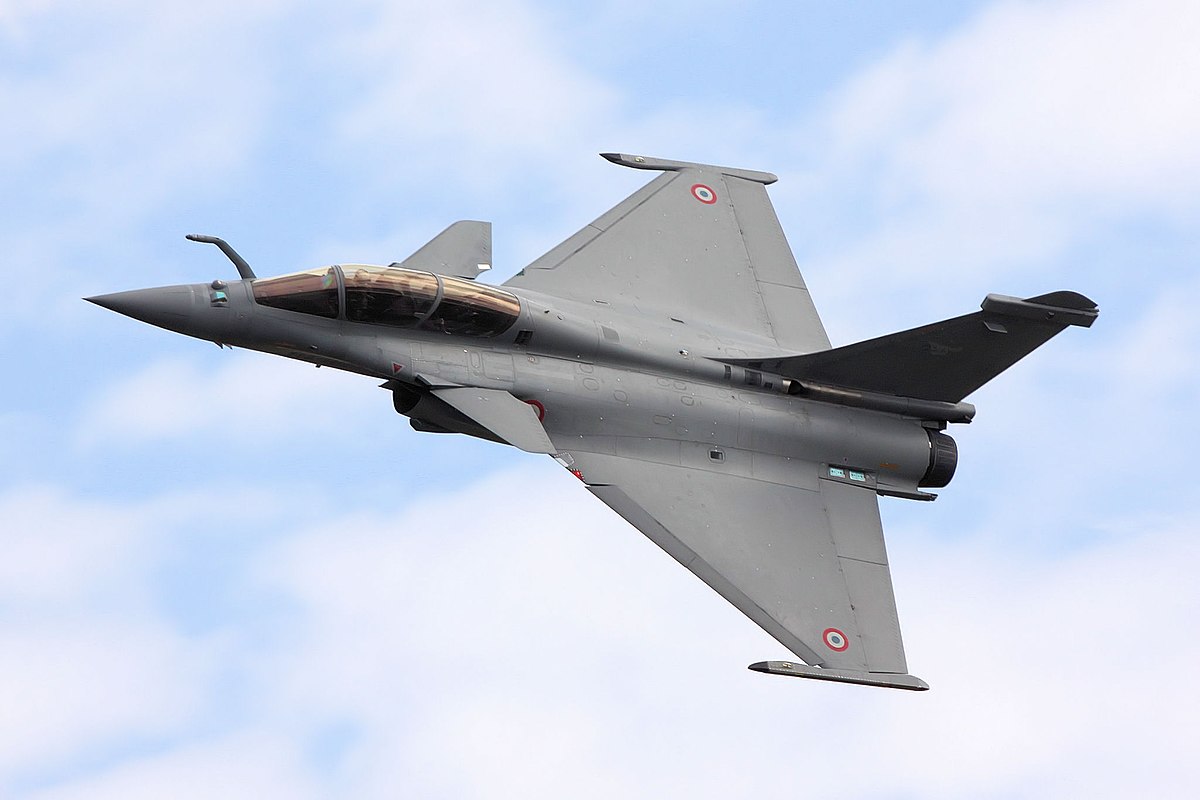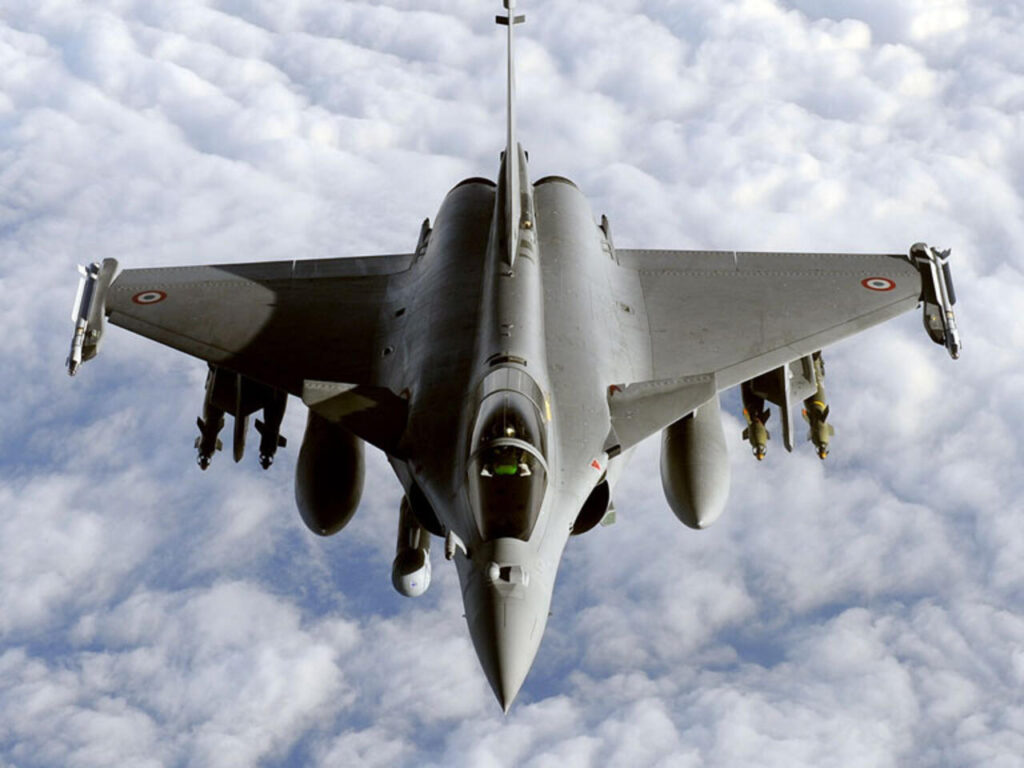
The Dassault Rafale is a highly
advanced, twin-engine, multirole fighter aircraft developed by Dassault
Aviation in France. Known for its agility, cutting-edge avionics, and
all-weather capabilities, the Rafale has become a symbol of aerial supremacy.
Its introduction into the Indian Air Force (IAF) marked a significant
leap in India’s defense preparedness, particularly amid longstanding tensions
with neighboring Pakistan.
As a 4.5-generation fighter jet, the Rafale is engineered to perform air
superiority, ground attack, reconnaissance, and nuclear deterrent missions—all
in a single sortie. With advanced technology, high maneuverability, and a
formidable weapons suite, it serves as a crucial component in modern warfare
scenarios.
Rafale’s
Origins in France :
The Rafale project was initiated in the
1980s when France sought to develop a next-generation fighter
aircraft that could operate from both land bases and aircraft carriers.
Dassault Aviation began developing the Rafale to replace multiple aging
aircraft in the French military, such as the Mirage F1 and Jaguar.
The first prototype of Rafale took
flight in 1986, and the aircraft entered service with the French Navy in 2004
and the French Air Force in 2006. It has since become the backbone of France’s
air defense and offensive strategy, participating in numerous operations in
Afghanistan, Libya, Syria, and Mali.
India’s
Rafale Deal with France :
In 2016, India signed a €7.87 billion
agreement with France for the purchase of 36 Rafale jets. This deal
came at a critical time for India, as the IAF faced a declining number of
operational fighter squadrons while threats from Pakistan and China loomed
large.
The Rafales delivered to India were tailored with India-specific
enhancements, including:
·
Israeli helmet-mounted displays
·
Infrared search and track (IRST) systems
·
Advanced radar systems
·
Capability to launch long-range Meteor
and SCALP missiles
The jets are also equipped with advanced
electronic warfare systems, known as SPECTRA, which enhance survivability
against radar-guided and infrared threats.
Rafale’s
Strategic Impact on India-Pakistan Balance
The induction of Rafale jets into the
Indian Air Force significantly altered the strategic equation between India
and Pakistan. Equipped with Meteor missiles, which have a range of over 150 km,
Rafale jets can strike enemy aircraft well before being detected—giving India a
significant edge in Beyond Visual Range (BVR) combat.
This was especially relevant in the wake
of the 2019 Balakot air strikes, where India carried out a pre-emptive
strike on terror camps in Pakistan. Following that, tensions between the two
countries escalated, and the need for advanced fighter jets became even more
pressing for India.
The arrival of Rafales has not only
boosted India’s deterrent capability but also enhanced its strike precision and
readiness to respond to any escalation by Pakistan. Indian defense
analysts and former Air Force chiefs have often emphasized that had Rafales
been in service during the Balakot operation, the outcome could have been even
more favorable for India.
Technological
Superiority
The Rafale’s unmatched combat systems
include:
·
RBE2-AA AESA Radar: Allows simultaneous
tracking of up to 40 targets.
·
SPECTRA EW System: Offers radar jamming,
missile warning, and threat neutralization.
·
Multirole Capability: Can seamlessly
switch roles mid-flight—from air combat to ground attack.
With a top speed of Mach 1.8 and
a combat range exceeding 1,850 km (extendable with aerial refueling), the
Rafale provides operational flexibility, even in high-altitude and harsh
weather environments such as the Ladakh sector, which has seen tensions
with both Pakistan and China.

Comparison with Pakistan’s Fleet:
Pakistan’s Air Force (PAF) primarily operates F-16s, JF-17 Thunder (jointly developed with China), and Mirage aircraft. While these jets are capable, the Rafale surpasses them in radar systems, electronic warfare, and missile capabilities.
The Meteor missile gives India superiority in BVR engagements. In contrast, the PAF’s current BVR capabilities are generally considered inferior in range and precision. Additionally, the Rafale’s stealth features and advanced electronic warfare systems make it difficult to detect and track.
As a result, the Rafale adds a psychological and strategic edge to India’s air defense capabilities, prompting Pakistan to seek upgrades for its own fleet and increase reliance on China for modern aircraft like the J-10C.
France’s Role and Continued Partnership:
The Rafale program not only strengthened India’s air power but also deepened Indo-French defense ties. France has emerged as a reliable defense partner, willing to share high-end technology and co-develop systems. Talks about further purchases and possibly assembling Rafales in India under the Make in India initiative are also ongoing.
In addition, France and India have conducted joint military exercises, including Garuda, enhancing interoperability and strategic trust between the two nations.
Conclusion:
The Dassault Rafale is not just a fighter jet—it’s a force multiplier for the Indian Air Force. With its unmatched combat capabilities, it significantly shifts the balance of power in South Asia, particularly in the face of evolving threats from Pakistan. Its successful integration into India’s defense arsenal, supported by France, ensures that India is better prepared to protect its sovereignty and maintain peace through strength in an increasingly volatile region.
